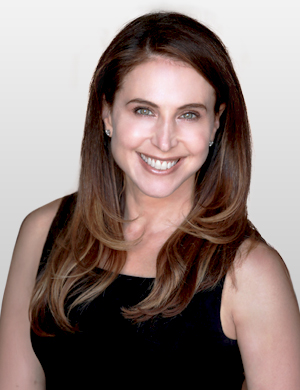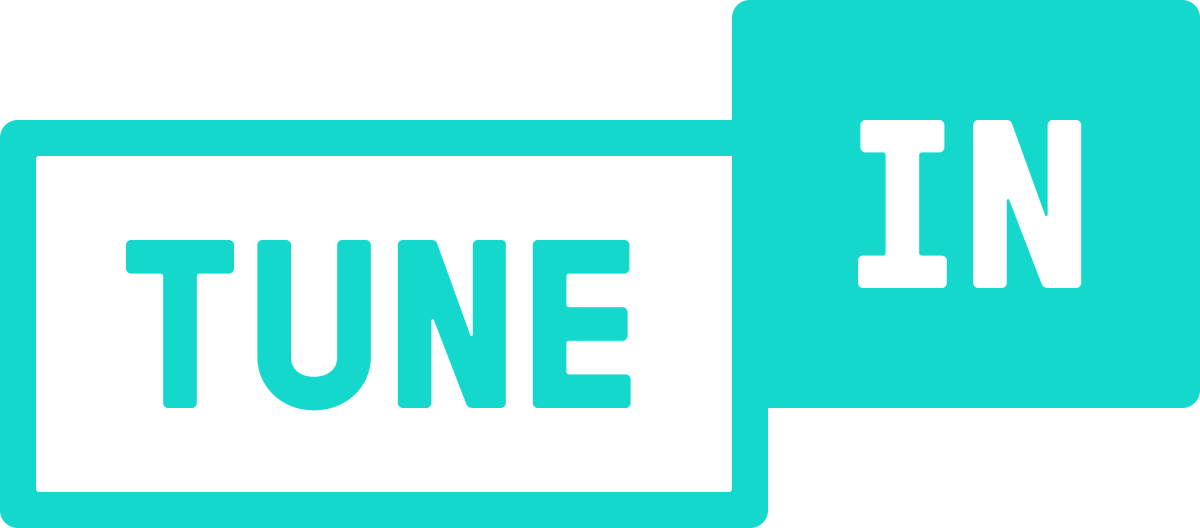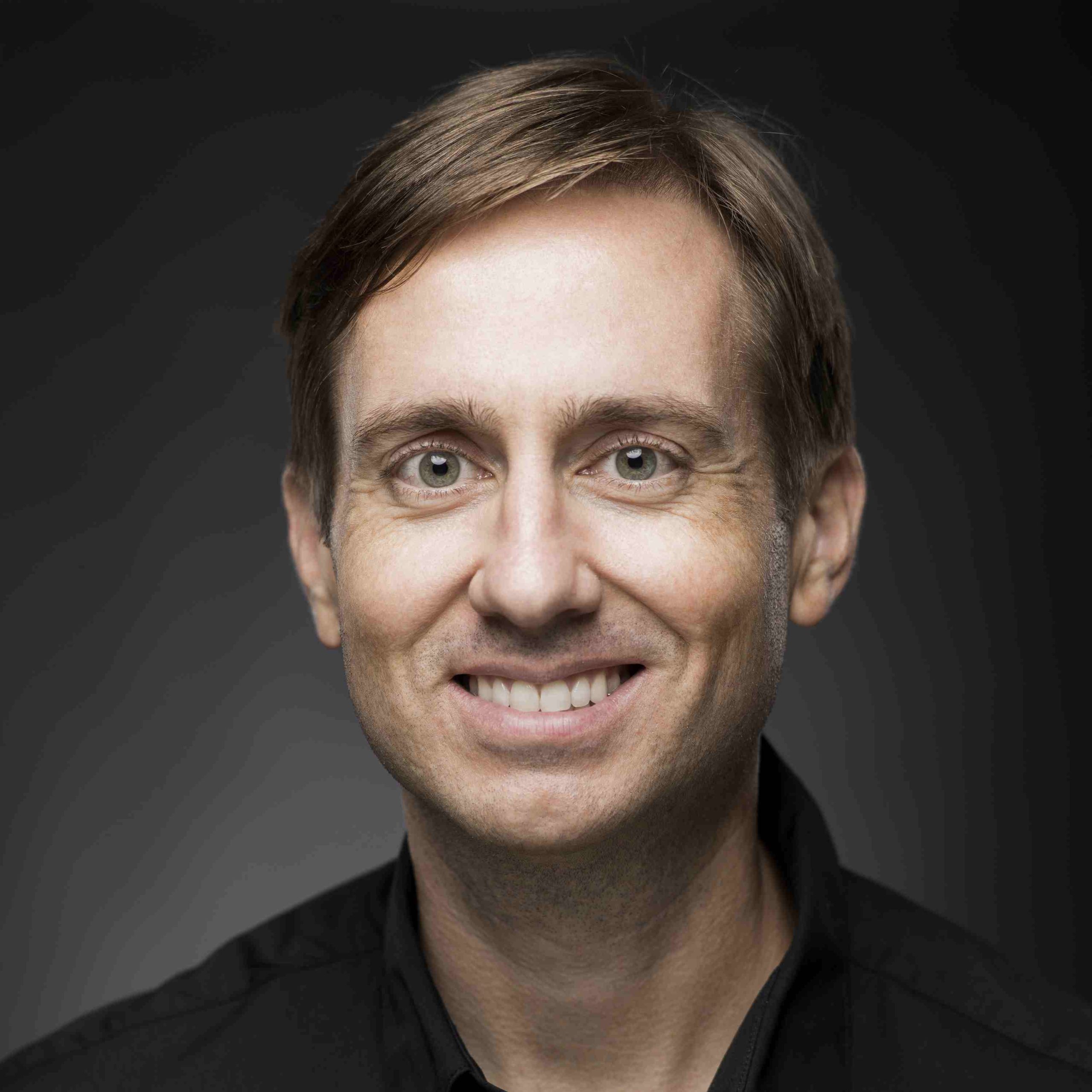Lara Schmosiman (00:12)
Hi guys. How are you? Welcome back to coffee. five. Something very interesting happened to me last week. I was in a meeting. They, they asked me a group of people just to talk about something. Doesn’t matter what. And they call me as an specialist and to explain. as a former professor, I do this every day and I try to simplify things. I don’t think that I need to.
to complicate things at this point of my life. Honestly, I want to simplify everything in my life. But someone else came to the meeting that in theory was another expert and he had to give his two cents and his two cents were so complicated in what he said that at the end I realized he said nothing.
And I was like, this world is getting really complicated. Are we confusing knowledge with bluff? And so let me bring you someone who is beyond all that bluff. She did absolutely everything. And today she’s helping others ⁓ getting over that bluff and look at the essence. So thank you so much for joining us today, Chelsea Grayson. How are you today?
Chelsea Grayson (01:08)
Hmm.
Thanks.
doing just
great actually. Yeah, thank you so much for having me. How are you doing?
Lara Schmosiman (01:33)
I’m doing okay. And very excited to talk about the bluff and to cut over all that bluff and got really to the essence to see how companies can succeed. I mean, tell us a little bit of your story because you today, you’re a board member, but you’ve been three times CEO, you’ve been in a law firm, you have an incredible career. So tell us a little more how you went from law to CEO.
Chelsea Grayson (01:45)
Sure.
thank you. Yeah.
Lara Schmosiman (02:00)
You work with brands like True Religion. We’re talking about really incredible brands and staple of our culture.
Chelsea Grayson (02:08)
Yeah, I’ve been really fortunate, you know, but I also worked really hard. I, yes, I started out as a lawyer. I call myself now a recovering lawyer, but I’m still actively licensed. keep my license fresh, so I’m weaponized. So watch out. But actually, all joking aside, I was a lover, not a fighter when I was a lawyer. I was a, I did originally corporate finance and then I did mergers and acquisitions. So I did all deals.
And ultimately I was a partner at the largest global law firm, which is called Jones Day. And I ran the mergers and acquisitions group for the West coast. There were five offices on the West coast. And, you know, I really, got into and A because my thought was, you know, I’d like to put companies together or I’d like to enable transactions that were, you know, at some point early on the deal gets done, the lawyers paratrooper out.
Now it’s these companies that we’ve put together that are just there to grow and scale and add to, you know, make a positive impact on the economy, whatever the micro economy, the macro economy, whatever. And I loved the idea that, you know, as a lawyer, I could be adjacent to business and I could help business thrive versus, you know, litigators are kind of there to, you know, break everything up and nobody ever really wins in the litigation anyway.
you know, it’s fun and it’s fun to duke it out like that, especially in court, but you’re not really contributing to the economy much. You’re contributing to your own economy because you’re all those feet.
Lara Schmosiman (03:34)
Yeah. Well, that’s
very nice of you to say that.
Chelsea Grayson (03:37)
So, ⁓ so I, you know, and then I was recruited to leave Jones Day when I was, as a partner, was recruited to join American Apparel as the general counsel. And hopefully everybody out there remembers American Apparel. was just an iconic Los Angeles based brand. What really, yeah, one of the few brands, one of the few companies at that time.
Lara Schmosiman (03:57)
I don’t remember.
Chelsea Grayson (04:02)
that was publicly traded but also headquartered in Los Angeles. I think at the time there were maybe just two other companies. Now there’s a whole bunch. So we were really groundbreaking in that respect. And American Pera was also the rare vertically integrated textile manufacturer. So we had seven ⁓ manufacturing and warehouse and distribution facilities all in and around downtown Los Angeles. We made everything.
starting from the thread. mean, even we made some dye, you know, we had a split.
Lara Schmosiman (04:31)
No, I mean,
you guys were such a staple on the American textile industry too.
Chelsea Grayson (04:36)
Absolutely. We were the largest employer aside from the LAPD at that point. And really we had 7,500 textile manufacturing workers that were all immigrants and they were all here because of that company. And so it was a really special culture of the company. And it’s hard to, I think the barriers to entry for a company like that today are so high that you just couldn’t rebuild it.
But I was asked to come in and be the general counsel. And after about a year of successfully being the general counsel there, ⁓ Goldman Sachs asked me to throw my hat in the ring to become the CEO. And ultimately they promoted me to the CEO position. And I ran the company for a few years and we beautified it to go to the market and sold it to another big public company called Gildan. And then Goldman Sachs called me and said, hey, you want to do it all over again because we also own true religion and we’d like for you to come in and be the CEO there. I’m cutting out a whole bunch of detail, of course.
Lara Schmosiman (05:28)
Okay.
Chelsea Grayson (05:29)
So ran True Religion for a couple of years, really fortunate to do that because True Religion, as you know, is yet another iconic Los Angeles based brand, also had been public before, headquartered still in Los Angeles, Manhattan Beach, and was just really iconic in a totally different part of Los Angeles culture. American Apparel was much more, ⁓ you know, ⁓ much more sort of a ⁓
Lara Schmosiman (05:36)
Yes.
Chelsea Grayson (05:55)
a bohemian vibe. were sort skims before skims happened. We were Coachella, really. True religion was much more hip hop culture. Yeah, so we would do not Coachella, but we’d do Rolling Loud, if that gives you any indication of where things sat. So that was super fun, really interesting. I had a real passion for that, and I loved the culture of that company. And then ultimately left just before COVID and decided the third chapter of my career was going to be sitting on boards most weeks.
Lara Schmosiman (06:03)
Yeah, more urban.
Chelsea Grayson (06:22)
mostly public company boards. One of the public companies whose boards I joined was Spark Networks, which is a NASDAQ company that owned a bunch of dating apps like JDate and SilverSingle and EliteSingle and ZUSC, which was on Sex and the City, the reboot. a couple of years, a few years into sitting on that board, they asked me to drop in and be the CEO. So I ran that company for about a year, very unexpectedly, because I sort of thought I was done with running companies, but that was fun because it tech company and a different exchange, you know. So that was…
Lara Schmosiman (06:45)
Yeah.
Chelsea Grayson (06:51)
a real learning experience. The company was headquartered in Berlin and so I was back and forth to Berlin a lot that year. But we ultimately sold that to the lender. Once we got done with that, I just returned to just the third chapter of my career, which I’m now firmly entrenched in, which is sitting on boards of directors. So currently sit on the board of two public companies, one Exponential Fitness, which is the largest global franchiser of boutique fitness and wellness brands. I sit on the board of Beyond Meat, plant-based food company.
the most successful plant-based food company in the industry. I sit on the board of two private companies, ⁓ Bedrock Manufacturing, which is the owner of Shinola Detroit, the watch company, and Filson 1897. And then I sit on the board of Sunrider International, which is a ⁓ Chinese herb-based health and wellness company in the MLM space. So yeah, that’s my.
Lara Schmosiman (07:43)
Well,
it’s an incredible journey. so what we were talking today, we were talking about the noise of outgrowing companies and what are the things that you can pinpoint as being the biggest noise right there out there that are not helping companies grow? can tell you just from my side, I can see it from marketing side, but I see just a little piece of the equation.
Chelsea Grayson (07:46)
Thank you.
Yeah. So, yeah. So the things that are just not helpful to a company as they’re trying to grow and scale. Is that what you’re asking? Yeah. I think, yeah, some of the things that will drag a company down is making too many hires too quickly, just because you had one little growth spurt. You had a good season, had a good year, whatever. I think companies get really fat really quickly. And it’s also really easily easy to dole out bonuses and dole out equity packages, you know, when things are riding high, but everything is cyclical.
Lara Schmosiman (08:17)
Yeah.
Chelsea Grayson (08:39)
There’s never just a straight line to growth and scale. So you really got to let your company take a lap around the sun, you know, before you decide that you’re going to make big expenditures, because truly the most painful thing to do as a leader, the worst thing to do as a leader is when you have to reduce force, when you have to do layoffs. We’ve all had to do it, but it’s just such an awful thing to go through and exposes you to liability potentially. so better to avoid that if you can. So I think that’s one.
trap that companies fall into. think another trap that retailers in particular fall into is expanding the brick and mortar footprint too quickly. It feels really sexy. Again, once you start having a little bit of cash, maybe you got an infusion from your investors and, boy, I want to see my name all over the place. I want to see it in Beverly Hills and Century City. I want to go to New York and see it in Manhattan. I want to see my name in Chicago. so I’m going to lay down a brick and mortar footprint that’s super broad.
That gets really expensive and good.
Lara Schmosiman (09:38)
question for you and I
totally agree with you that it gets really expensive and we’ll go into that. But it’s what it says to a brand that it is something I see in restaurants trying to be everywhere.
Chelsea Grayson (09:43)
Yeah.
Yeah, yeah. And you can’t be everything for everybody, but it’s not even so much about that. It really is just about getting into these leases that for the most part are going to be long term leases. They’re going to be expensive to buy yourself out of. Sometimes the only way to get out of a bad lease is to file a Chapter 11 bankruptcy. Nobody wants that. And so better to hold off. If you need a flagship here, if you need a flagship there, okay, maybe. But for the most part, data see is really the way to go while you’re growing.
know, D to C and also wholesale through something like a revolve or, you know, any other online, you know, retail D to C platform, you know, better to be more disciplined in that respect. I think the other mistake that companies make is not hiring a really sharp CMO or a group of folks in your marketing department that have more tech that are, you know, marketing technology, their performance marketing based. think.
Brand marketing is fun and you need to do all of that, you know, but taking that content and weaponizing it pixel for pixel in the right way, minute by minute, every single day. If you don’t have a team that’s fresh and can do that, and I’m talking about like 25 year olds because they’re state of the art. know all the things. You don’t want.
Lara Schmosiman (10:58)
I
love you for just saying that because it’s so important that people know me. They know I don’t believe, I feel like we destroy the world branding. That branding is not an emor- we cannot say it’s all about the image of the company. It’s branding is part of your strategy and your growth strategy and you cannot separate branding from growth.
Chelsea Grayson (11:01)
Thank
Yeah.
Absolutely. You you hit the nail on the head. So you’re just weaponizing content properly. Spend the money to do it. It’ll be worth it. And you can track that ROI. That’s the great thing about Martech. For every dollar you spend, you can see exactly how many dollars come back for that one dollar. And all day long, you can have somebody pushing and pulling the levers, making decisions about what to do and where to go. You know, ⁓ and it’s so easy. I mean, even for me, I look at one haul.
from Revolve or something on Instagram on my reels. And now all my reels are hauls from Revolve. It’s very easy for folks to do that these days. ⁓ And people know that. So I think it’s a pitfall not to spend that money. And finally, I would say that once your company starts to grow a little bit, get away from your board of advisors, whatever that is. That’s nothing. Make a real board. Put a true board together.
Lara Schmosiman (11:52)
Yeah.
Chelsea Grayson (12:12)
Those are the cheapest high level advisors you’re ever going to get, much cheaper than consultants because you’re paying them whatever you’re paying them. If it’s an early stage private company, 75 grand, a hundred grand a year, whatever, but you’re going to get dedicated 24 seven service from those folks. And if you do it right, they’re all people who have been CEOs at companies that you aspire to be. And they’re there to serve you. So put together a good board of directors as soon as you possibly can.
Lara Schmosiman (12:39)
That’s really an amazing advice. But let’s talk for a second for brands that they’re just starting and maybe they are not having all the budget. I was talking this morning to a brand who just started and they tell me, well, I spent too much money in ads and it didn’t go anywhere. I say, what? They did it wrong, of course, because they just put the money in ads.
Chelsea Grayson (12:59)
They did it wrong. They did it wrong.
Lara Schmosiman (13:07)
nothing else. You can just not do one piece. You need to make sure that you are connecting all the platforms and everything is working for you. So yeah, of course, they’re not going to come and buy the first time they see a product. You need to be everywhere and they need to see you everywhere. all the time, but it’s not, and also with smaller budgets, they’re not going to happen overnight. You’re going to have to spend for a while until you start seeing return of investment.
Chelsea Grayson (13:08)
Exactly.
Exactly.
all the time. Yeah.
Yes.
And if they’re not seeing it, they don’t have the right people doing it. And they need to fire those people and get new people and then get new people and then get new people. got, there’s a way to make it and do it right. There’s, companies out there that are making a ton of cash, you know? Um, but, but you hit the nail on the head again, you know, you have to be everywhere all the time. I need to see that.
Lara Schmosiman (13:48)
Yeah.
Chelsea Grayson (13:58)
those brown suede stiletto mules constantly everywhere until all of a sudden I’m sort of like, it’s inevitable, I’ve got to buy those. I’ve got to see them.
Lara Schmosiman (14:06)
know you’re
dreaming about it. You see yourself in your dream wearing them. Yeah.
Chelsea Grayson (14:12)
right? ⁓
And, you know, and so I agree with you. I think if they’re not seeing the results, then they’re just not doing it right. need to reject.
Lara Schmosiman (14:20)
would love us in the position that we are today because there is this big talk ⁓ about, I know and probably most of our audience know what I think about this now, but I really make a separation nowadays in what is an influencer, what is a content creator, and what is a brand ambassador. And I think one of them is going out. So what do you think?
Chelsea Grayson (14:40)
for sure.
Yeah,
I think that’s right. I influencers, if you’re going to characterize yourself like that, you’re probably going to be unemployed in a year. think you’re right. Content creators and brand ambassadors, these folks who are truly entrenched with these brands and they’re creating and they understand how to create beautiful content. mean, my goodness, some of the gorgeous stuff you see out here, just even flipping through reels, you know, and I know that’s like a 50 year old talking because most people are on TikTok, but just flipping through this stuff, you’re sort of like
Why would you ever need to hire an ad agency again? You know, some of these people can create beautiful content. They’ve got their LTK links right there. They’re all really savvy with that. You know, it flips you right to it. ⁓ and there’s 8 million different ways to get to what it is. And then they all get the really key part is the technology is finally sophisticated enough to remunerate those folks. So if you would go from their link to whatever Zara by that thing.
Lara Schmosiman (15:22)
Yeah.
Chelsea Grayson (15:40)
they’re gonna get remunerated because it goes right back to them and you don’t have to enter any kind of profile well codes or anything like that. The system is finally set up in exactly the right way to properly incentivize them and they’re out of here, you know?
Lara Schmosiman (15:52)
I absolutely, this is something being a brand ambassador, creating people and give them skin in the game. Like if we doing well, you’re doing well too.
Chelsea Grayson (16:01)
That’s right. And we’re going to have beautiful events that we’re going to invite. We’re going to send you stuff. We’re going to. Yeah, it’s all it’s all part of a really beautiful ecosystem that finally is hitting its stride. And it wasn’t doing that when I was back at True Religion American Apparel. We wished for some of the stuff that
Lara Schmosiman (16:15)
my God, that would have been so amazing for those two brands. Yes.
Chelsea Grayson (16:18)
Amazing.
So, but yeah, it’s a really beautiful time we’re living in right now for retail.
Lara Schmosiman (16:23)
Yeah, absolutely. So how do you feel about all these brands that now they’re celebrity brands? Do you think that is a trend? it a fad?
Chelsea Grayson (16:32)
I think that sometimes it works like, you know, Hailey Bieber, you look at Rhodes Beauty and she sold it and she’s going to continue on there in a transition services agreement for a couple of years. think she truly, she created something on her own. had like two products, you know, and she pushed it. She had a following that was so engaged with her that whatever she was telling them to buy, they were buying it. So that’s a success story.
Conversely, can think of, I’m not gonna name any names, because I don’t want a lawsuit, but I can think of a celebrity that was connected to one of the boards I sat on. ⁓ We had a celebrity that had approached us and wanted to create their own product line under our umbrella. This was a celebrity that had a massive, one of the biggest followings on social media at that time, still does.
Lara Schmosiman (17:03)
Yeah.
Okay.
Chelsea Grayson (17:25)
So we sort of thought, well, gosh, how can we lose? And so we did the deal and created the product with this person. And it was a total flop. And the reason was because we hadn’t looked properly. The celebrity had followers who loved this celebrity, but didn’t have the wallet and didn’t have the inclination to spend when the celebrity told them to spend. They would go see the celebrity when the celebrity performed.
but they weren’t necessarily engaged in what the celebrity wanted them to buy because it just wasn’t aspirational enough for them or they just didn’t have the wallet. The group that was following this person just didn’t have the spending power. So the product was a flop. We ended up spending the whole thing off. So I think it really depends on what the engagement of the celebrity is and what have they cultivated. If you’ve come up on the side of ⁓ I’m aspirational on what you want to be, first you start
just selling other folks products, but then you create something yourself and now it’s inevitable for that follower. have no choice but to buy it. That’s powerful. If it’s a celebrity that came up as an artist and they’ve just kind of been doing their thing, I don’t know. I feel like…
Lara Schmosiman (18:32)
Do you think
that, for example, because you’re a celebrity, can have a getaway of creating a lower quality product?
Chelsea Grayson (18:40)
No, I don’t. And I think that’s been proven time and time again. think celebrities that do that, they might sell out of their first drop, but then the reviews, people are very vocal online and they have no problem expressing their opinion. And then they also don’t do the thing that you want them to do. And you know this as a marketer, as a marketing executive, the most lucrative and cheapest customer you can have is the repeat return customer. They cost nothing.
Lara Schmosiman (19:05)
Of course.
Chelsea Grayson (19:07)
The first customer, the first time buyer is so expensive to acquire. So if you don’t have something sticky, if you don’t have a product that’s sticky, you’re screwed. They’re not going get that repeat business. So if you have something cheap, you’re just never going to, you’ll, you’ll make money on the first drop and you’ll never make money again. So no, I don’t think they can get away with it. I think you look at something like skims is a really good example. That’s a beautiful, high quality product. People cannot, I mean, every time she drops something, you go to the store right here and, ⁓
in WeHo, I’m in Los Angeles. I mean, it’s packed all the time. There’s lines. I mean, it’s like the Apple Store, you know? And that’s because she’s taken time to make a product that reflects her personally, but also to make a product that’s super high quality, that’s gonna last, like American Apparel. You know, the hand is beautiful. And that’s why she’s actually established a real brand and not just a flash in the pan kind of goodbye thing, you know?
Lara Schmosiman (19:58)
If seeing the beauty fashion wellness industry today, what do you think is going to happen next year? What do you think ⁓ what’s coming next in the industries keeping where at the time of this recording we are in June, 2025, when we’re still ⁓ talking about tariffs and it’s really hard. So knowing this ⁓ industry right now and in the moment of our internationally, not even in our country, how ⁓
Chelsea Grayson (20:17)
Yeah, it’s really hard. Yeah.
Lara Schmosiman (20:28)
What do you predict for the industry?
Chelsea Grayson (20:31)
You know, it’s hard because they’ve been talking about, there’s a downturn in the economy coming. It’s coming. It’s coming. There’s going to be another recession, a mini recession or whatever. And I think that’s probably true. War never makes anybody want to spend money, you know? So we have kind of a skirmish breaking out in the Middle East as we’re talking. ⁓
The tariff situation is so mercurial, who the heck knows where it’s gonna land, but people don’t like unpredictability one way the other, you know? ⁓ But right now the markets are up. I mean, today is Juneteenth, so the markets are closed. But yesterday the markets were generally up. And ⁓ you don’t yet see people tightening their pocketbook and holding onto their cash. The travel industry is still generally robust as we’re talking today.
people are still buying things to go on their travels as we’re sitting here talking today. So it feels a little bit like the consumers putting their head in the sand like an ostrich and sort of ignoring it because they still want to continue to live their beautiful life.
Lara Schmosiman (21:34)
But do think brands should be planning to make less expensive products?
Chelsea Grayson (21:39)
No, I don’t think less expensive is ever the solution unless you’re, you know, one of these, you’re just known for making less expensive stuff that people wear once and that’s it. I actually think that if I was going to give guidance to brands, would say, ⁓ reduce the number of skews that you currently have and that you’re planning to have next year. Focus on your core products with a couple of pops, a couple of special, you know, hero products here and there just to bring people in. And ⁓
you know, focus less on again, innovation, R and D and more on what you truly think is going to be your meat and potato core spend. What’s going to bring people in? What are they going to always have to spend money on? Because these are the basics with a little bit of fun mixed in and where are your highest margin products? You know, so don’t, I don’t know, you know, don’t try to kind of fill your stories with everything new, new, new all the time. You know, resist the pressure to do that. And that’ll sort of
be a safety net for you, at least for the first half of next year. And then you can rejigger if you feel like the economy has remained robust, you know? And hopefully it will. I I’m pulling, I’m pulling for, especially our economy, you know, pulling for us. I want us to succeed because we’ve been through some chaos recently. Yeah.
Lara Schmosiman (22:50)
We sure have.
Well, thank you so much, Chelsea. It was great having you here and thank you so much for all the knowledge and for sharing.
Chelsea Grayson (22:59)
This was a real pleasure and delight. Thank you so much.
Lara Schmosiman (23:02)
And to you guys, thank you for being here with me one more time and I will see you next week with coffee number five.








